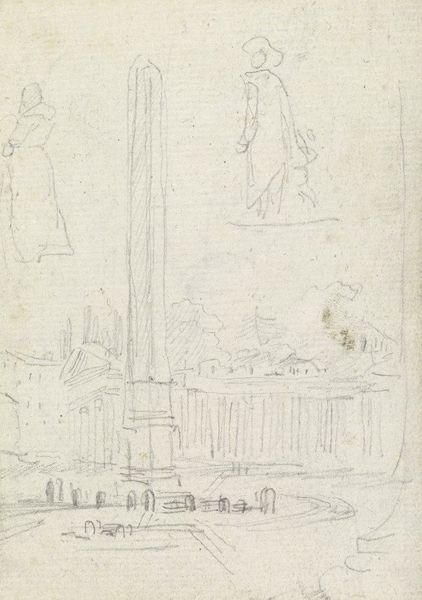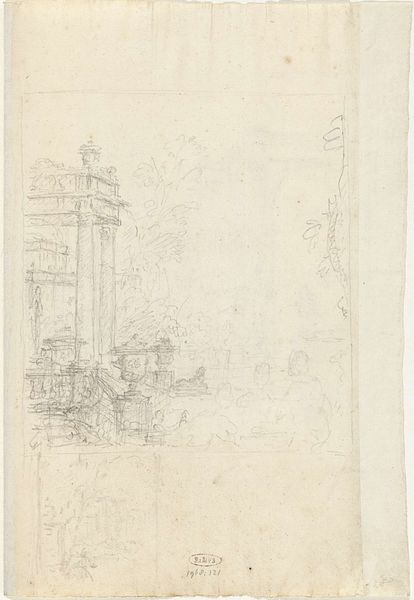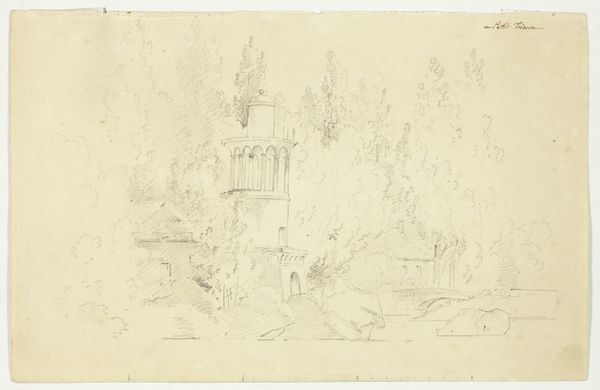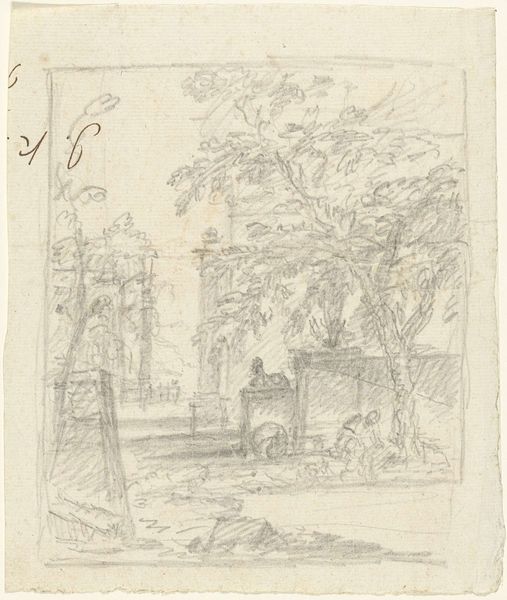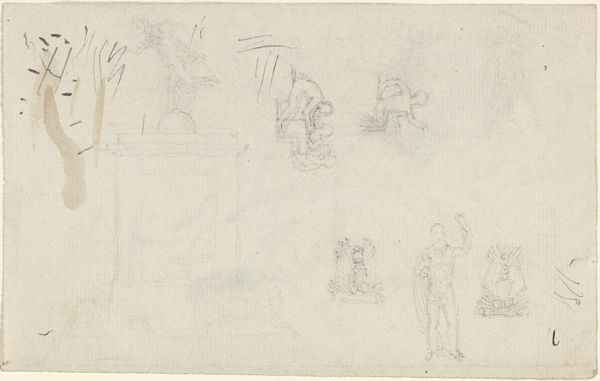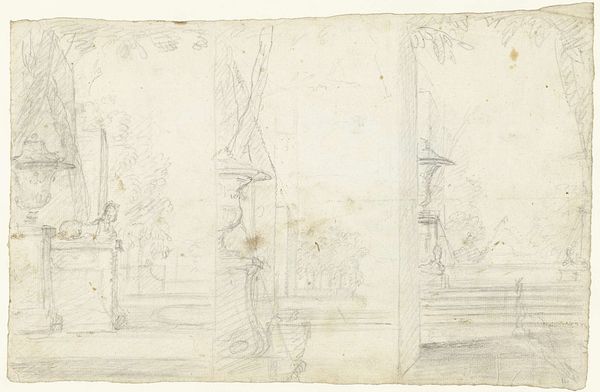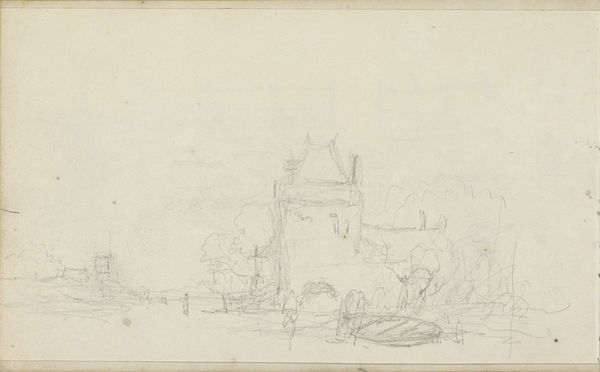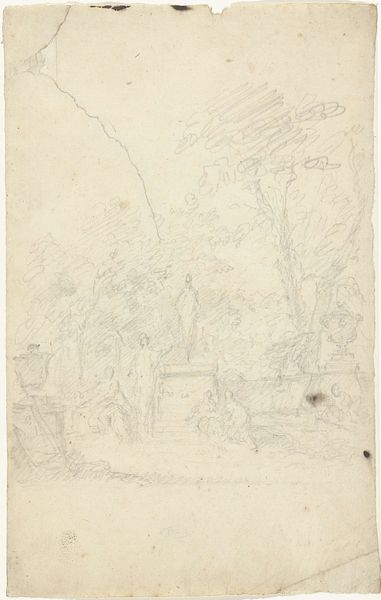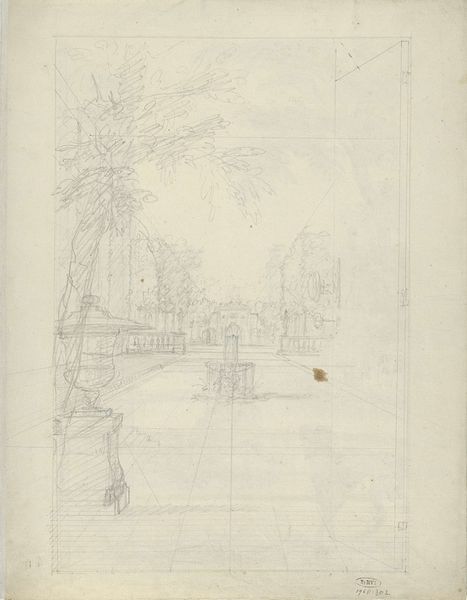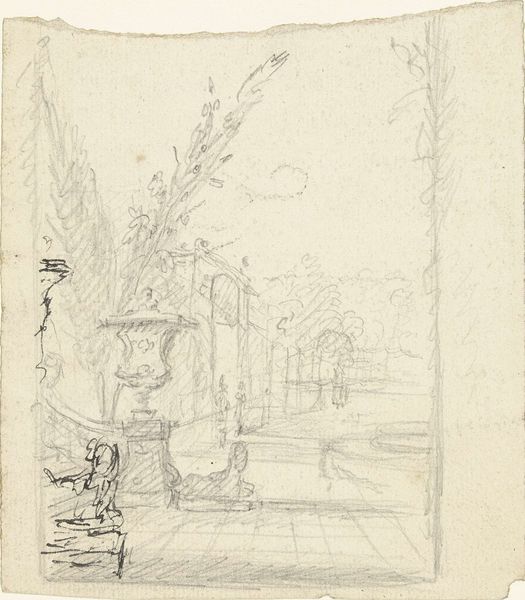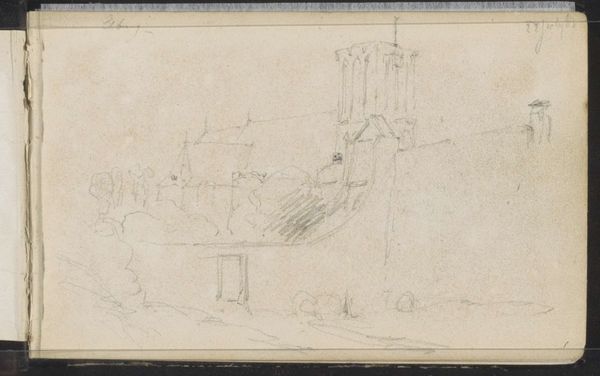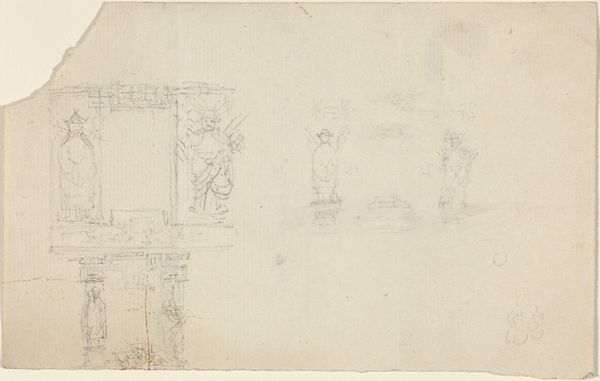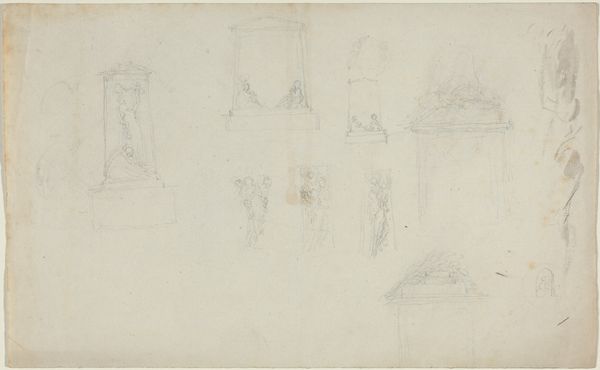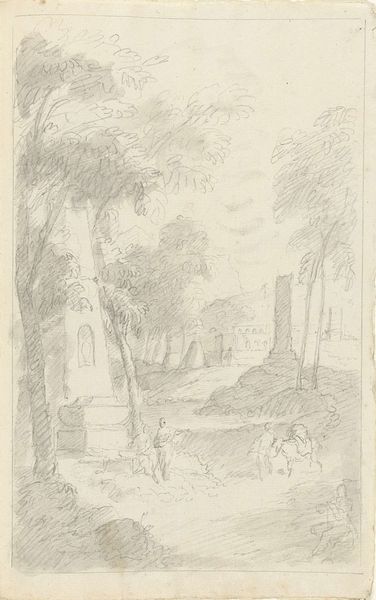
drawing, pencil
#
drawing
#
garden
#
neoclassicism
#
landscape
#
pencil
#
15_18th-century
#
line
Dimensions: height 327 mm, width 210 mm
Copyright: Rijks Museum: Open Domain
Editor: This pencil drawing, titled "Ontwerpschets van een tuin met gebouwen," or "Design Sketch of a Garden with Buildings," by Dionys van Nijmegen, dates back to the 18th century. The delicacy of the lines creates such an airy and ethereal feel. How would you interpret its place within art history? Curator: The sketch's neoclassicism points us towards a fascinating period in garden design. The 18th century witnessed a shift from the formal gardens of the Baroque era to more naturalistic landscapes, influenced by philosophical ideals about nature and social order. Do you see how the architecture is integrated, almost subservient, to the planned landscape? Editor: Yes, the building doesn’t dominate. It blends almost seamlessly, with these lush details! It is such a peaceful interaction. Curator: Indeed. This integration was a deliberate political and social statement. Landowners displayed not only their wealth, but also their enlightened understanding of nature and their place within it. The 'natural' look of the garden was carefully constructed to evoke ideals of liberty, reason and harmonious society. Can you consider the role drawings like this played in that display? Editor: I suppose it allowed landowners to visualise their desired societal ideals, but was that accessible to everyone, since only few could commission works of art? Curator: Precisely! That visual vocabulary became another way to express power, shaping the perception of those ideals. Reflect on the museumification of garden estates. Does the transformation in our present day help recontextualise that past in any shape or form? Editor: That's fascinating, how these seemingly innocent garden designs could reflect broader societal power structures. Thinking about who commissioned them and how they were used provides such a new layer of meaning. Curator: Exactly, now every time we admire these landscapes we have the responsibility to think about how socio-political elements played their role.
Comments
No comments
Be the first to comment and join the conversation on the ultimate creative platform.
